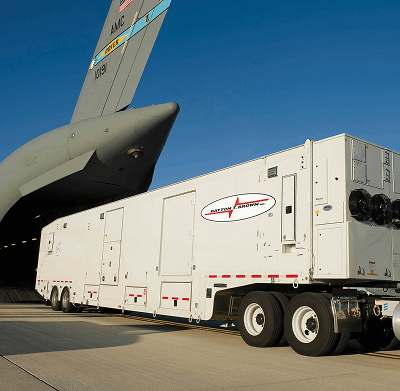
Ensuring material integrity, reliability, and performance is at the core of our Metallurgical & Materials Services. Our experts provide comprehensive support, from material selection and testing to failure analysis and microstructural evaluation, delivering critical insights that enhance durability, optimize product design, and prevent costly failures. Whether assessing corrosion resistance, verifying compliance with industry standards, or conducting advanced mechanical property evaluations, we are committed to helping you achieve superior results while maintaining the highest standards of quality and reliability.
Our fully equipped metallurgical laboratory provides expert analysis and evaluation of materials across a wide range of industries, including aerospace, defense, transportation, and industrial manufacturing. We assess complete systems, subsystems, and components for aircraft, rotorcraft, rail, marine, and automotive applications. By leveraging advanced testing methodologies, we ensure compliance with industry standards while optimizing material performance, reliability, and longevity.
With extensive experience in complex failure investigations, our team systematically constructs the root cause failure cascade (RCFC) to identify the primary failure mechanism. By eliminating non-contributing factors, we provide focused, data-driven insights that lead to practical mitigation strategies. Our reports offer actionable solutions to enhance durability, optimize maintenance procedures, and prevent future failures.
We specialize in identifying, evaluating, and mitigating various forms of corrosion, including general pitting, intergranular, crevice, galvanic, stress corrosion cracking (SCC), and corrosion fatigue (CF). Our advanced corrosion testing facilities expose materials to controlled corrosive environments and mechanical stress, delivering quantifiable, comparative data. Our expertise enables us to develop actionable solutions to improve material longevity and prevent corrosion-related failures.
Our laboratory is equipped with advanced stereomicroscopes, scanning electron microscopy (SEM), and energy dispersive spectroscopy (EDS) to perform detailed fractographic analyses. By examining fracture surfaces at both macro and micro levels, we determine fracture initiation points, estimate fatigue life, and develop practical strategies to enhance component durability. Our fractographic expertise enables us to eliminate potential failure modes and construct accurate RCFCs for effective failure prevention.
We analyze plated and coated surfaces for composition, hardness, and structural integrity using both non-destructive and destructive techniques. Our evaluations identify defects such as debonding, crack initiation, propagation, peeling, and corrosion susceptibility. Additionally, we assess the effectiveness of surface treatments, including shot peening and passivation, ensuring compliance with quality standards and improving component performance.
Our welding analysis services include evaluations of various welding techniques, such as resistance welding, TIG welding, and electron-beam welding, as well as brazing and soldering processes. We assess conformance to AWS standards and provide consulting for process optimization and troubleshooting. By identifying weld defects and structural weaknesses, we help improve joint integrity and enhance overall manufacturing quality.
Our metallurgical and materials engineering services are supported by state-of-the-art equipment and facilities designed for precise material assessments.
By leveraging cutting-edge technology and industry expertise, we deliver reliable, data-driven insights that drive product improvements, ensure regulatory compliance, and enhance overall material performance.
ASTM E 1444
ASTM E 1417
a. Standard Rockwell
b. Superficial Rockwell
c. Micro (Vickers, Knoop)
d. Durometer Hardness
ASTM E 18
ASTM E 18
ASTM E 384
ASTM D 2240
ASTM STP 557
ASTM STP 504
ASTM STP 839
ASTM E 3
DTB procedure or customer specified
a. Macro-etching
b. Micro-etching
ASTM E 340
ASTM E 381
ASTM E 407
DTB procedure or customer specified
MIL-STD-867C
AMS 2658
a. General microstructure
b. Retained austenite
c. Decarburization (visual)
d. Grain size
e. Inclusions
f. Uniformity
g. Defects (voids, cracks, etc.)
h. Segregation
The following specifications include all or part of the evaluations listed: ASTM E 3, ASTM E 7, ASTM E 112, ASTM E 930, ASTM E 1181, ASTM E 1077, ASTM E 1382, ASTM E 1951, ASTM E 45, SAE J422 DTB procedure or customer specified
DTB procedure or customer specified
SAE J423 DTB procedure or customer specified
AMS 2759
ASTM E 1077
ASTM F 2328
SAE J419
DTB procedure or customer specified
AMS 2759
ASTM A 262
ASTM A 763
ASTM G 28
ASTM G 110
ASTM STP 656
DTB procedure or customer specified
AMS 2759
ASTM A 262
ASTM A 763
ASTM G 28
ASTM G 110
ASTM STP 656
DTB procedure or customer specified
ASTM B 748
ASTM E 1508
DTB procedure
AMS 2700
ASTM A 967
Machine calibration with standards
Aluminum alloys – ASTM E 1251
Titanium alloys – ASTM E 2994
Nickel alloys – ASTM E 3047
Magnesium alloys – ASTM B 954
Stainless steel – ASTM E 1086
Steel – ASTM E 415
Cast iron – ASTM E 1999
Copper alloys
Carbon/Alloy steel
ASTM E 1508
DTB
procedure with standards
Case-based
Case-based
Case-based
Case-based
DTB procedure or case-based
Dayton T. Brown, Inc. is the trusted partner for ensuring that your materials and products remain at the forefront of quality, safety, and performance.
Contact us today to learn more about how our Metallurgical & Materials Services can help you achieve optimal results and long-lasting success.

We provide comprehensive technical publication services, offering expert technical writing, illustration, data conversion, and systems integration. Our team specializes in mechanical, electrical, and hydraulic systems, and we are adept at creating and managing technical documentation to meet evolving standards like S1000D. From authoring and graphics to legacy data conversion and 3D model integration, we deliver precise, tailored solutions to support your technical information needs.

Our logisticians are experienced in the preparation of logistics management information and critical logistics deliverables such as level of repair analysis & provisioning, maintenance planning & reliability, and logistics consulting – ensuring efficient, cost-effective support for military, commercial, and government programs.

SCIFs, Shipping Containers, Material Management Support
We specialize in designing and integrating advanced products and intelligent systems such as mobile and transportable SCIFs, satellite shipping containers, and material procurement support for your critical missions.
Dayton T. Brown, Inc. 1175 Church St. Bohemia, NY 11716
Dayton T. Brown, Inc. 23967 Prop Way Hollywood, MD 20636